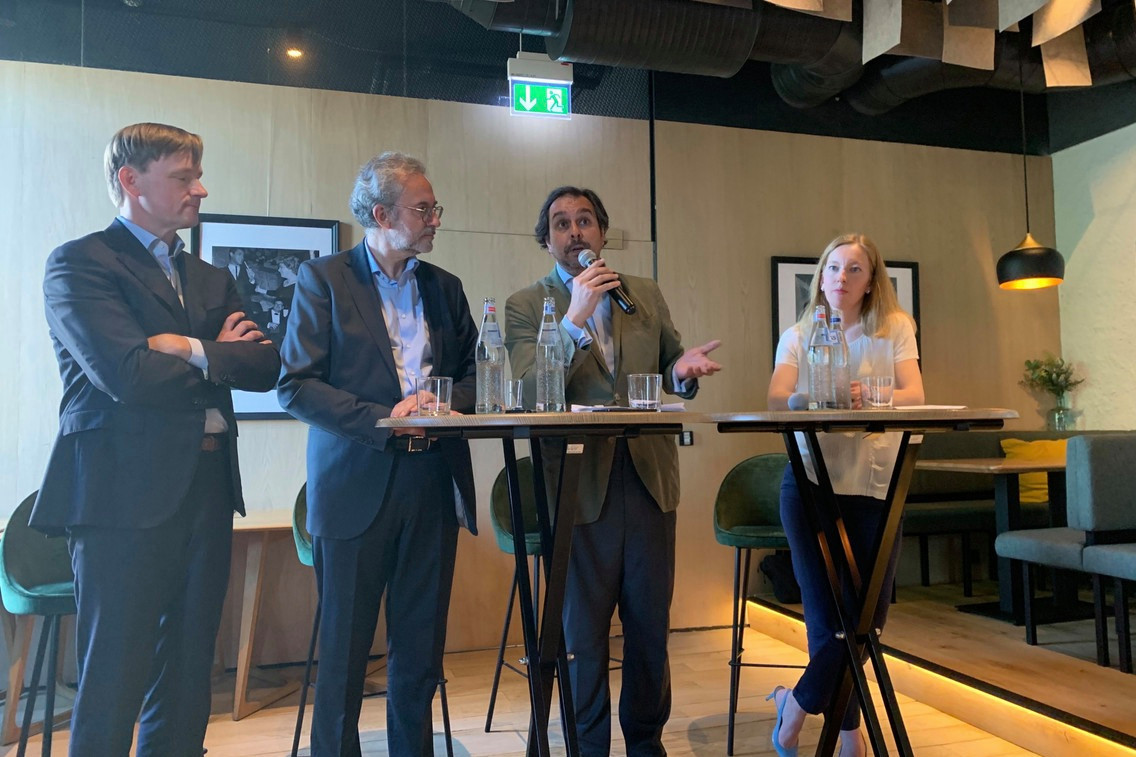What is impact investment?
In line with the “Global Impact Investing Network definition, an impact investment is an investment made with the intention to create measurable social and environmental impact alongside financial returns,” suggested Patrick Goodman, co-founder of Innpact. He thinks that “creating an impact” should be intentional, not a mere accident.
Goodman recounted his experience in microfinance in India where 80% of the borrowers in the fund he was working with were women. The fund “still coins itself as impact investment” but part of the social impact came as an accident.
Secondly the social or the environmental impacts, “have to be measurable according to the [UN] sustainable development goals or under other KPIs,” mentioned Goodman. Third, it should provide a financial return “as we are not talking about philanthropy.”
Jean-Baptiste Oldenhove, founder of Estari Group, added another dimension which aim at reducing the negative externalities, i.e., looking at how a “business can reach at least a breakeven point where it is not damaging the environment or the social [aspects].”
[ESG is] a lever to diminish the risk or to improve the opportunities
Given that the leverage buy-out business invests in matured small and mid-sized companies that “employ 90% of the population,” Thomas Geneton, co-founder & managing partner of the BOWI! private equity fund prefers a definition borrowed from Ronald Cohen of APAX Partners, who allegedly said that “impact is the measure of the benefits of an action to people and the planet. […] it has a social, because of the people, and an environmental dimension,” according to Geneton.
How to integrate UN SDGs in your investment process?
“We try to understand which UN SDG goals apply to which segments of the market,” said Oldenhove. He explained that when targeting an investment in vertical farming, or in micro-mobility [in the VC business], his firm “relates it to the UN SDG goals that make sense,” but relies on outside experts to assess the impact of a company.
According to Goodman, an investor needs to look beyond the 17 SDGs and “look at [169 targets] sub-SDGs […] to be able to determine exactly what impact you actually want to create.”
“SDGs are not so important to us,” said Geneton. The pressure on ESG comes from the ground up. He explains that company managers see ESG nowadays as “a lever to diminish the risk or to improve the opportunities,” such as getting cheaper financing. Hence, Geneton opines that there is no need to force the adoption of the ESG strategies.
Why type of financial returns can be expected from impact investing?
“Performance [is critical] so that capital flows towards good companies with good intentionality […] and it is a very difficult task for all of us,” said Oldenhove. He thinks that the target returns need to be “in line with the industry.” That can even be enhanced “because you’re creating companies that are more valuable, [and investors] are keen to own a company producing good food.”
“Impact is ideal for strengthening companies”, said Geneton referring to a quote by Ronald Cohen. He added: “companies that will have entered a transition towards sustainability and will be able to demonstrate that with KPIs, in the next years, will be more desirable for the entire ecosystem (clients, bankers, shareholders and suppliers).” Geneton noted that companies with low ESG scores are already hard to sell today unless you agree on a sale price at lower multiples.
It is a common understanding that the fiduciary responsibility of a company is to maximise profitability. “I argue that there is also a fiduciary responsibility of directors to actually ask questions about the impact of the climate […] on the company and of our company on the climate, because it will bite at some point,” said Goodman.
How do you ensure that execution goes according to plan?
“We create sustainability committees […] It’s like a new audit committee, but on impact [which] role is to identify [a handful] of key metrics, that are very important from an environmental and social perspective,” said Oldenhove. He also stressed the importance of measuring KPIs “systematically and with the same process and the same methodology every year.”
“We consider that E is as important as S and our carried interest is linked 50% to environment objectives and 50% to social objectives,” said Geneton. Interestingly, he explained that there is a “mechanism to share value creation with all the employees of the companies at the exit” for every portfolio company to align the interest of all internal stakeholders.
Are financial markets supportive of impact investment?
Goodman has observed that “more and more to pension funds” acknowledge the “need to develop their impact strategy.” However, they must protect the value of the assets of the future pensions and are therefore threading slowly and carefully on impact investments.
Oldenhove thinks that US capital markets are “keen to go for innovation […] and to take more risks.” However, he is concerned that “impact [investing] has a fairly bad reputation in terms of investment returns,” which results in an uphill battle to recover the trust of the US investors and to convince them that impact investing can “lower risks and can create better returns.”
This article was published for the Delano Finance newsletter, the weekly source for financial news in Luxembourg. .
